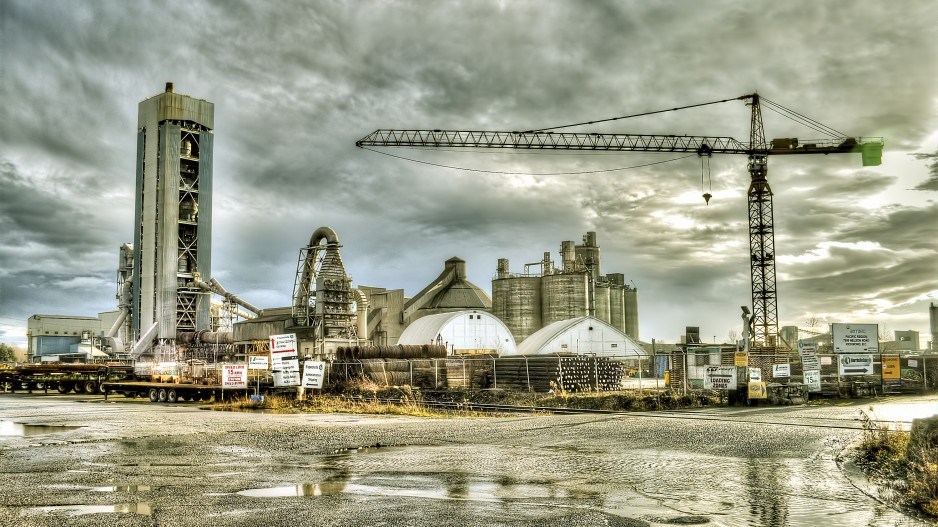When it comes to decarbonizing the economy, it’s the stuff of modern life – steel, cement, fertilizer, plastics, chemicals – that will prove hardest to clean up.
Fortunately for Canadian industries, many of these products produced in Canada already have a comparatively low carbon profile compared to many other countries, thanks to its clean power grid (hydro and nuclear power).
Canada already can boast that it produces some of the lowest carbon aluminum in the world, thanks to hydro power in B.C. and Quebec.
“Canada’s low-carbon advantage means it’s ideally positioned to grow these industries alongside new ones,” Clean Energy Canada says in a new report on decarboniing Canada's heavy industries.
But the demand for certain metals and materials like cobalt, lithium and graphite is expected to grow by 500%, and steel by 55%, over the next three decades, driven by largely the energy transition to more renewables and electric vehicles. With increased production of these materials, associated emissions will also increase.
Roughly 11% of Canada’s emissions comes from heavy industry (including mining, but excluding oil and gas industries), according Clean Energy Canada.
At some point, these industries will need to find ways to eliminate or offset their carbon emissions, if Canada is to reach a net zero target by 2050, says Clean Energy Canada.
And as other countries adopt net zero policies as well, the demand for stuff of life that has lower carbon profiles will increase, which Clean Energy Canada sees more as an opportunity than a challenge, given that Canada already has a bit of a head start.
“Canada is well-positioned to capitalize on what’s been called the green economy supercycle, during which sustainably produced energy and mineral prices soar,” the report states.
The four key technology approaches to decarbonize heavy industry will be carbon capture and storage, hydrogen, biofuels and increased electrification.
Chemical and fertilizer production accounts for the largest share of emissions in Canada’s heavy industries, followed by iron and steel, cement, mining, and pulp and paper, in that order.
Each industry has its own unique challenges and potential solution. For cement production, carbon capture and storage is a likely solution that is already being trialed. Vancouver’s Svante is is working with Lafarge on a carbon capture and recycling demonstration project at its cement plant in Richmond, for example.
“Carbon capture is definitely a great off-the-shelf solution,” said Sarah Petrevan, policy director for Clean Energy Canada.
For pulp and paper mills, which use a lot of natural gas, the solution may include fuel switching to biofuels.
As for mining, many Canadian mines that are connected to the grid in places like B.C. and Ontario already have a comparatively low carbon profile, which could be reduced even further through electrification of mining equipment and vehicles.
Decarbonizing steel production will be a lot harder. Currently, most steel producers in the world use metallurgical coal and iron to make steel. Some demonstration projects are in the works, mainly in Europe, to make steel from green hydrogen.
But green hydrogen is prohibitively expensive at this point. It is estimated that making steel from green hydrogen would add 30% to the cost. It could be 10 to 20 years before making steel from green hydrogen becomes cost competitive. And even then, the adoption may be slow, due to the cost of plant conversion.
“Industrial plants tend to have long lifetimes: typically, 30-40 years for plants in heavy industries,” the International Energy Agency (IEA) notes. “Retiring them early to switch to alternative technologies would incur very large costs. As such, emissions from recently built plants can be considered “locked-in” unless options are available to retrofit or adapt them to reduce their emissions intensity.”
Any steel maker will be competing with China, which produces about half of the world's steel, and which has a lot of relatively new blast furnaces in recent years.
How fast a transition to hydrogen for making steel will depend on creating markets that are willing to pay more, said Chris Bataille, a Simon Fraser University professor and co-author of the Deep Decarboniation project for Canada.
"This stuff is all technically doable," he said. "The options exist - they've been piloted. But it's a matter of creating demand for them."
In Canada, it’s expected that blue hydrogen production – made from natural gas but with carbon capture and sequestration – will dominate the hydrogen production space until the cost of producing green hydrogen from water and electricity can compete – something that could take a decade or more.
The same cost constraints could also delay a transition for the fertilizer industry as well, since one of the solutions there is to make ammonia from green hydrogen.
Petrevan said industry and policy makers should not get fixated on green hydrogen.
“What we argue at Clean Energy Canada is that you shouldn’t really spend too much time at all focused in the colour of the hydrogen,” she said. “What you want to focus on is the emissions intensity, and you want the emissions intensity to get lower over time.”




